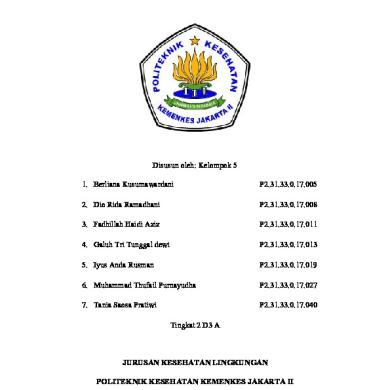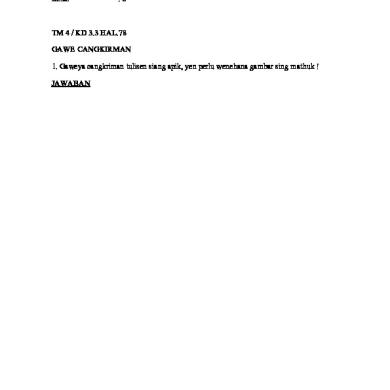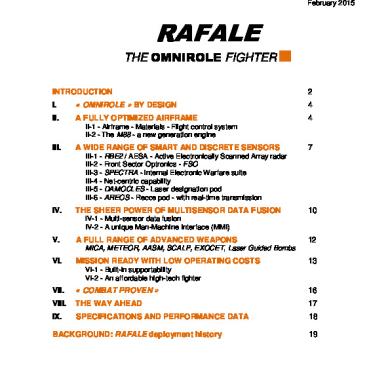* The preview only shows a few pages of manuals at random. You can get the complete content by filling out the form below.
Description
INDUSTRIAL TRAINING REPORT ON PROGRAMMABLE LOGIC CONTROLLER Submitted in the partial fulfillment of requirement for the award of the Diploma of
ELECTRICAL ENGINEERING
SUBMITTED BY
AMIT SHUKLA
191075209256
UNDER THE GUIDANCE OF ER. MANDEEP SINGH THAKUR
HOD (ELECTRICAL ENGINEERING)
DEPARTMENT OF ELECTRICAL ENGINEERING CHANDIGARH POLYTECHNIC COLLEGE, GHARUAN SEPTEMBER – 2021
CHANDIGARH POLYTECHNIC COLLEGE
1
CERTIFICATE
Submitted by:
Submitted to:
AMIT SHUKLA
MANDEEP SINGH THAKUR
191075209256
Head of Department
Electrical Engineering
Electrical Engineering
Chandigarh Polytechnic College
Chandigarh Polytechnic College
Gharuan
Gharuan
CHANDIGARH POLYTECHNIC COLLEGE
2
ACKNOWLEDGEMENT
The Industrial Training Report is a task which cannot be done by an individual in isolation. I have no exception to this rule and have gratefully accepted the helping hand offered by many. We express my deep gratitude and indebtedness to Dr. GURMEET SINGH SWAG (Principal Chandigarh Polytechnic College Gharuan) and Chandigarh University for providing us such a platform, infrastructure and learning environment.
We also grateful to “ER. MANDEEP SINGH THAKUR” (HOD “ELECTRICAL ENGINEERING”) and “ER. KAMALPREET SINGH” (Assist.
Professor,
Department
of
“ELECTRICAL
ENGINEERING”)
Chandigarh Polytechnic College, Gharuan for extending all possible help in formation and completion of Training and for his valuable guidance and constant encouragement at each and every step-in preparation of this Training.
AMIT SHUKLA
CHANDIGARH POLYTECHNIC COLLEGE
3
ABSTRACT
The programmable Logic Controller (PLC) is the central controlling unit in the industry or a process. The effective operation of the process and safety considerations if programmed appropriately can meet the required objectives. The present technical paper briefly distinguishes the present automation systems and the past technologies to identify and explore the capabilities of PLCs for any process. The relay logic and contactor logics (RLC) were practiced in the olden days which include the human intervention and errors. The advent and application of microprocessors, microcontrollers and new specific tools such as PLCs, Supervisory control and data acquisition (SCADA) and Distributed control systems (DCS) have increased productivity, accuracy, precision and efficiency. These systems reduced human intervention and increased the flexibility in the process control. The keyword automation clearly state that the working of a process or repetition in an efficient manner by incorporating mechanisms and control sequences in the proper order several times with acceptable deviations in the output of the process.
CHANDIGARH POLYTECHNIC COLLEGE
4
Table of Contents Contents
Page No.
Certificate_________________________________________________2 Acknowledgements__________________________________________3 Abstract__________________________________________________4 Table of Contents___________________________________________5 The Need for PLCs__________________________________________6 The first Programmable Logic Controller_________________________6 Advantages of PLC Control Systems____________________________7 PLC System________________________________________________9 Processor (CPU)___________________________________________12 Programming Device________________________________________15 Ladder Diagram____________________________________________16 Traffic Light Ladder Programming_____________________________18 PLCs Versus Personal Computers______________________________21
CHANDIGARH POLYTECHNIC COLLEGE
5
The Need for PLCs Hardwired panels were very time consuming to wire, debug and change. GM identified the following requirements for computer controllers to replace hardwired panels. Solid-state not mechanical Easy to modify input and output devices Easily programmed and maintained by plant electricians Be able to function in an industrial environment
The First Programmable Logic Controllers (PLCs) Introduced in the late 1960’s Developed to offer the same functionality as the existing relay logic systems Programmable, reusable and reliable Could withstand a harsh industrial environment They had no hard drive, they had battery backup Could start in seconds Used Ladder Logic for programming
Programmable Logic Controller A programmable logic controller (PLC) is a specialized computer used to control machines and process. It uses a programmable memory to store instructions and specific functions that include On/Off control, timing, counting, sequencing, arithmetic, and data handling
CHANDIGARH POLYTECHNIC COLLEGE
6
Advantages of PLC Control Systems
Flexible Faster response time Less and simpler wiring Solid-state - no moving parts Modular design - easy to repair and expand Handles much more complicated systems
Sophisticated instruction sets available Allows for diagnostics “easy to troubleshoot” Less expensive
PLC Architecture
CHANDIGARH POLYTECHNIC COLLEGE
7
PLC System
PLC Architecture An open architecture design allows the system to be connected easily to devices and programs made by other manufacturers. A closed architecture or proprietary system, is one whose design makes it more difficult to connect devices and programs made by other manufacturers. NOTE: When working with PLC systems that are proprietary in nature you must be sure that any generic hardware or software you use is compatible with your particular PLC.
CHANDIGARH POLYTECHNIC COLLEGE
8
I/O Configurations Fixed I/O Is typical of small PLCs Come in one package, with no separate removable units. The processor and I/O are packaged together. Lower in cost -but lacks flexibility.
CHANDIGARH POLYTECHNIC COLLEGE
9
Modular I/O Is divided by compartments into which separate modules can be plugged. This feature greatly increases your options and the unit’s flexibility. You can choose from all the modules available and mix them in any way you desire.
CHANDIGARH POLYTECHNIC COLLEGE
10
Power Supply
Supplies DC power to other modules that plug into the rack. In large PLC systems, this power supply does not normally supply power to the field devices. In small and micro PLC systems, the power supply is also used to power field devices.
CHANDIGARH POLYTECHNIC COLLEGE
11
Processor (CPU) Is the “brain” of the PLC. Consists of a microprocessor for implementing the logic, and
controlling the communications among the modules. Designed so the desired circuit can be entered in relay ladder logic form. The processor accepts input data from various sensing devices, executes the stored user program, and sends appropriate output commands to control devices.
CHANDIGARH POLYTECHNIC COLLEGE
12
I/O Section Consists of: Input modules Output modules.
Input Module
Forms the interface by which input field devices are connected to the controller. The terms “field” and “real world”are used to distinguish actual external devices that exist and must be physically wired into the system.
CHANDIGARH POLYTECHNIC COLLEGE
13
Output Module Forms the interface by which output field devices are connected to the controller. PLCs employ an optical isolator which uses light to electrical- ly isolate the internal components from the input and output terminals.
CHANDIGARH POLYTECHNIC COLLEGE
14
Programming Device A personal computer (PC) is the most commonly used programming device. The software allows users to create, edit, document, store and troubleshoot programs. The personal computer communicates with the PLC processor via a serial or parallel data communications link.
Hand-held programming devices are sometimes used to program small PLCs. They are compact, inexpensive, and easy to use, but are not able to display as much logic on screen as a computer monitor.
CHANDIGARH POLYTECHNIC COLLEGE
15
Hand-held units are often used on the factory floor for troubleshooting, modifying programs, and transferring programs to multiple machines.
LADDER DIAGRAM A ladder diagram (also called contact symbology) is a means of graphically representing the logic required in a relay logic system.
Ladder Representation
CHANDIGARH POLYTECHNIC COLLEGE
16
PLC WIRING DIAGRAM
SCAN A PLC resolves the logic of a ladder diagram (program) rung by rung, from the top to the bottom. Usually, all the outputs are updated based on the status of the internal registers. Then the input states are checked and the corresponding input registers are updated. Only after the I/Os have been resolved, is the program then executed. This process is run in a endless cycle. The time it takes to finish one cycle is called the scan time.
CHANDIGARH POLYTECHNIC COLLEGE
17
Traffic Light Ladder Programming
CHANDIGARH POLYTECHNIC COLLEGE
18
901 RTO
RUNG1 901
RUNG2 RUNG3
RUNG4
901
RUNG7 RUNG8
902
902 RTO 901
901
902 903
RUNG12
30
RST J. Green
903
66
RTO 901
902
903 904
RST
904 RTO 901
904
CHANDIGARH POLYTECHNIC COLLEGE
904 905
20 M. Green
71
71
RUNG11
M. Red
66
RUNG9
RUNG10
RST 67
67
RUNG5 RUNG6
901
80
RST 70
40 M. Yellow
19
RUNG13
905 RTO
70 901
RUNG14 RUNG15
RUNG16 RUNG17 RUNG18
RUNG19
903
905 906
65
65 901 902
906 907
CHANDIGARH POLYTECHNIC COLLEGE
906 RTO RST
J. Yellow
10
64
J. Red
907
64
RUNG 20
RST
10
RTO 901
907
RST
50
20
PLCs Versus Personal Computers
VS
PLC:
Operates in the industrial environment. Is programmed in relay ladder logic. Has no keyboard, CD drive, monitor, or disk drive. Has communications ports, and terminals for input and output devices.
PC: Capable of executing several programs simultaneously, in any order. Some manufacturers have software and interface cards available so that a PC can do the work of a PLC.
CHANDIGARH POLYTECHNIC COLLEGE
21
CHANDIGARH POLYTECHNIC COLLEGE
22













